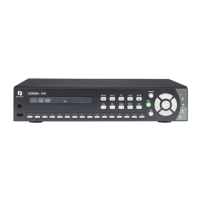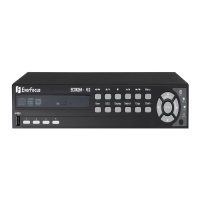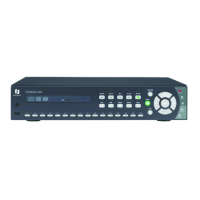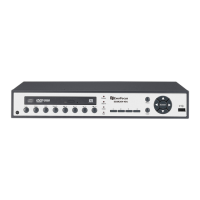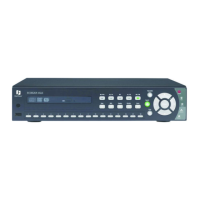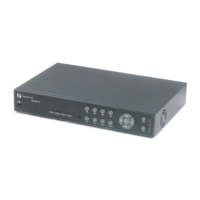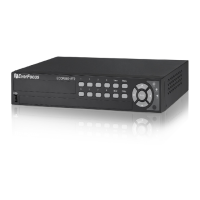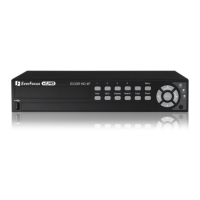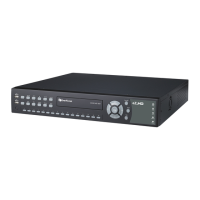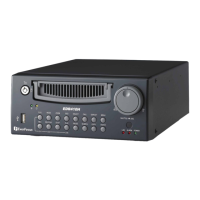Do you have a question about the EverFocus ECOR264-16X1 and is the answer not in the manual?
Essential safety guidelines for operating the DVR to prevent hazards and ensure proper use.
Information regarding compliance with FCC rules for radio frequency interference in residential environments.
Details on the DVR's capabilities, compression format, technical specifications, and package contents.
Description and identification of front and rear panel components, ports, and indicators.
Guides for connecting cameras, audio, alarms, RS485, USB, and network interfaces.
Steps to power on the DVR and begin menu setup after physical installation is complete.
How to navigate menus and control the DVR using a mouse and front panel buttons for basic operations.
Core functions including recording, login, camera selection, playback, search, and copy operations.
Utilizing PTZ control, display layouts, channel switching, sequence modes, and zoom functions.
Quick setup for global recording parameters and detailed settings for individual cameras.
Configuring recording modes, playback options, and alarm/event triggers with associated actions.
Setting up recording schedules based on time, day, holidays, and network parameters like IP, DNS, email.
Managing disk lock/format, configuring display options, system parameters, and viewing device information.
Understanding network basics like TCP/IP, subnet masks, and setting up various connection types.
Connecting to the DVR via web browser, including security settings, ActiveX, live view, and playback.
Configuring dynamic DNS for remote access and setting up port forwarding on routers.
Common issues and solutions for DVR recording, display, connectivity, and network problems.
Visual explanation of different alarm timing modes and their behavior.
Rules for auto-adjusting image quality and frame rate based on recording days.
Overview of the IR remote control functions, keypad layout, and ID number correspondence.
| Video Input Channels | 16 |
|---|---|
| Video Input | BNC |
| Video Compression | H.264 |
| Video Output | HDMI, VGA |
| Alarm Input/Output | 16/4 |
| Network Interface | RJ-45 |
| PTZ Control | Yes |
| Operating System | Embedded Linux |
| HDMI Output | 1 |
| VGA Output | 1 |
| USB Ports | 2 |
| Power Supply | 12V DC |
| Operating Temperature | 0°C to 50°C |
